Do you have a question about the YASKAWA T1000V and is the answer not in the manual?
Yaskawa's responsibility, warranty, and importance of reading the manual for safe application.
General safety precautions, conventions for safety messages, and supplemental safety info.
Safety precautions for receiving the drive, including handling and environmental considerations.
Inspect for damage, verify model number on nameplate.
Description of drive models and their corresponding enclosure types (IP ratings).
Illustration and identification of drive components.
Safety precautions for mechanical installation, covering fire and crush hazards.
Specifications, procedures, and environmental requirements for proper drive installation.
Safety precautions for electrical installation, covering shock, fire, and crush hazards.
Overview of drive connections with peripheral devices and digital I/O.
Wiring diagrams for main circuit connections for single-phase and three-phase power supplies.
Illustrations of main circuit terminal block configurations for different drive sizes.
Safety precautions for start-up, programming, and operation.
Explanation of the LED operator's keys, displays, and screen meanings.
Overview of drive modes (Drive, Programming) and navigation methods.
Summarizes basic start-up steps for different applications using flowcharts.
Checklist and status display information before and after powering up the drive.
Explanation of Auto-Tuning types, preparation, interruption, and procedure.
Procedure for operating the drive with the motor uncoupled from the load for testing.
Steps for connecting machinery and running the motor and load together for testing.
How to verify settings, change access levels, and set passwords.
A checklist to review before performing a test run, covering various control modes.
Parameters for initial setup, including language, access levels, and initialization methods.
Parameters for frequency reference, run command, braking, PID control, and energy saving.
Parameters for acceleration/deceleration times, S-curves, slip compensation, and carrier frequency.
Parameters for setting frequency references, including multi-step and offset frequencies.
Parameters for configuring V/f patterns and motor data for optimal control.
Parameters for configuring communication option cards and fault detection methods.
Parameters for assigning functions to multi-function digital input and output terminals.
Parameters for motor protection, stall prevention, and overvoltage suppression.
Parameters for advanced adjustments like hunting prevention and PM motor control.
Parameters for digital operator display, keypad functions, and copy functions.
Parameters for textile applications, including Disturb and KEB functions.
Parameters to view drive status, fault information, and PID control aspects.
Safety precautions for troubleshooting, covering electrical and fire hazards.
Information on counteracting oscillation, hunting, and other faults during trial runs.
Descriptions of alarms, faults, and errors with causes and solutions.
Detailed fault displays, their causes, and possible solutions.
Descriptions of alarms, their causes, and possible solutions.
Information on oPE codes, causes, and solutions for programming errors.
Codes, causes, and solutions for faults detected during Auto-Tuning.
Procedures for diagnosing and resetting faults, including fault trace viewing.
Guidance for troubleshooting issues that do not trigger alarms or faults.
Safety precautions for performing inspections and maintenance.
Recommended daily and periodic inspections to avoid premature deterioration.
Maintenance monitors and estimated performance life of replaceable components.
Details on cooling fan operation, replacement, and installation.
Information on serviceable parts, terminal board, and drive replacement procedures.
Safety precautions for installing peripheral devices and options.
Lists available peripheral devices and options with model numbers.
Illustrates drive connections with peripheral devices and options.
Steps and precautions for installing MCCBs, reactors, noise filters, etc.
Information on available communication options for connecting drives to networks.
Explains Heavy Duty (HD) and Normal Duty (ND) load characteristics and their differences.
Power ratings, currents, and specifications for 200V drives.
Power ratings, currents, and specifications for 400V drives.
General drive specifications including control methods, frequency range, and functions.
Table showing watt loss data for various drive models.
Information on derating for ambient temperature, altitude, and carrier frequency.
Explanation of parameter table structure and columns.
Lists parameter groups (A-U) with corresponding page numbers.
Comprehensive list of parameters, descriptions, ranges, and defaults.
Default parameter values based on control mode selection.
Default V/f pattern settings for different drive capacities and control modes.
Default parameter values specific to drive models based on o2-04 setting.
Parameters affected by PM motor code selection (E5-01) for OLV control.
Parameters affected by carrier frequency selection (C6-02).
Safety precautions for MEMOBUS/Modbus communication, focusing on electrical hazards.
How to configure drives for MEMOBUS/Modbus communication using master/slave setup.
Technical specifications for MEMOBUS/Modbus communication, including interface and speeds.
Instructions for connecting the drive to a MEMOBUS/Modbus network, including cable and termination.
Parameters for setting up MEMOBUS/Modbus communications, including slave address and speed.
Observing and controlling the drive using MEMOBUS/Modbus communication.
Explains message timing for master-to-drive and drive-to-master communication.
Details the structure of MEMOBUS/Modbus messages, including slave address, function code, and CRC.
Examples of command and response messages for registers and loopback tests.
Lists MEMOBUS/Modbus data types: command, monitor, and broadcast data with register numbers.
Use of Enter commands for parameter changes and drive upgrades.
Lists MEMOBUS/Modbus error codes, their causes, and possible solutions.
Procedure for self-diagnostics of serial communication interface circuits.
Safety precautions related to CE and UL standards compliance.
Information on CE mark, Machinery Directive, Low Voltage Directive, and EMC guidelines.
UL/cUL mark requirements, installation area, and main circuit wiring standards.
Precautions and description of the Safe Disable input function per ISO13849-1 and IEC61508.
Tables for recording drive and motor specifications for technical assistance.
Tables for recording important parameters for basic setup.
Table to record user-modified parameter settings, with diamond indicators for run-time changes.
| Brand | YASKAWA |
|---|---|
| Model | T1000V |
| Category | Controller |
| Language | English |

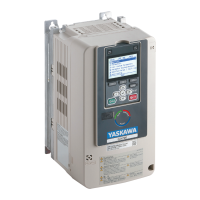
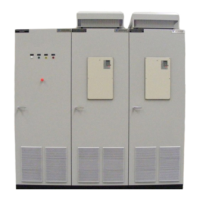
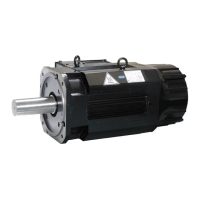
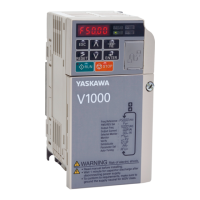
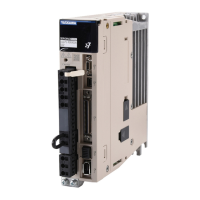
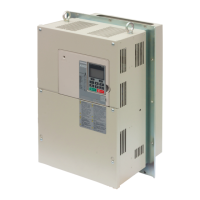
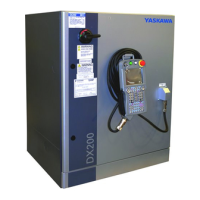
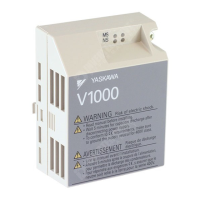
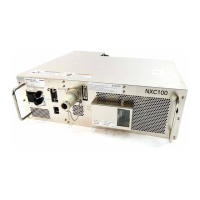
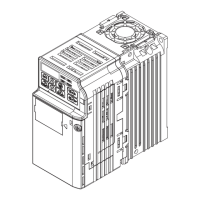
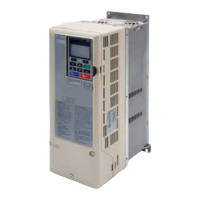
